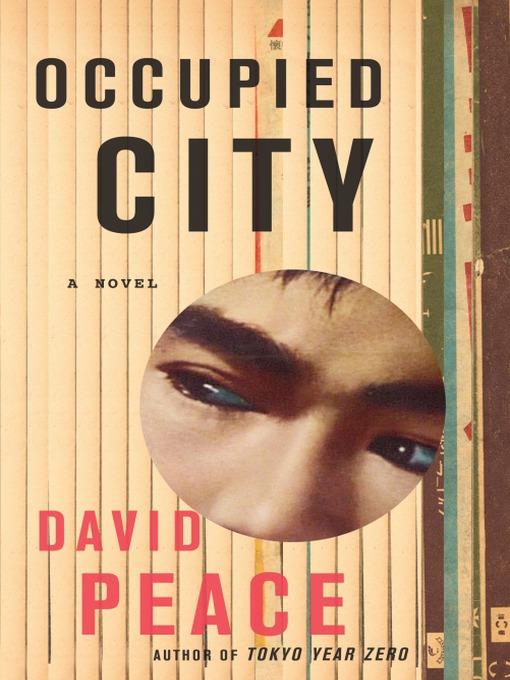
Occupied City
Tokyo Trilogy, Book 2
- اطلاعات
- نقد و بررسی
- دیدگاه کاربران
نقد و بررسی

Starred review from December 21, 2009
Set in 1948 and based on a Japanese murder case, Peace's second novel in his Tokyo trilogy (after Tokyo Year Zero
) is a tour de force. One afternoon, just after closing, a man posing as a health official arrives at a Tokyo bank. He gets the bank's employees to ingest poison by pretending to inoculate them against dysentery, then escapes with the bank's money. In Roshomon
fashion, a number of disparate characters, including Murray Thompson, an American army doctor who's convinced the Japanese are lying about bioweapons experimentation, offer dramatically different perspectives on a horrific crime that claims 12 lives. By presenting these points of view through newspaper articles, police reports, and letters to a faraway spouse, Peace humanizes his characters and provides subtle insights into how they interpret the facts of the mass murder. This literary thriller will more than satisfy readers with a taste for ambiguity.

Starred review from January 1, 2010
A man walks into a Tokyo bank, and when he walks out, 12 of its 16 employees are dead.
Jan. 26, 1948. Both the war and the subsequent American occupation are a few years old. Since beaten and dispirited people do not go in much for healthy skepticism, it's perhaps unsurprising that when a plausible stranger enters the Shinamachi branch of the Teikoku Bank at 3:30 on a Monday afternoon, he needs not much more than a decently cut business suit and what might be construed as a doctor's bag to establish his bona fides. There's dysentery in the area, he announces. He's been sent by Tokyo's welfare ministry to distribute the appropriate medication. Can the entire staff be assembled? It can, and in an atmosphere that borders on sheep-like acceptance, he administers the so-called immunization. The result: almost instant mass-murder. All 16 employees are felled; 12 die, the rest are hospitalized; and their killer exits a rich man. Though more than a hundred detectives are assigned to this stunning crime (based on an actual one), early leads are essentially useless. The plausible stranger seems to have appeared out of nowhere and vanished into nonexistence. When at length an arrest is made, the evidence ranges from flimsily circumstantial to downright dubious. Moreover, it becomes apparent that there's a fierce, hard-edged resistance to closer examination. Is that because there's an ugly connection to certain dehumanizing biological-warfare experiments highly placed people are determined to keep hidden? Of course it is.
Powerful and ambitious, this British import is deepened by a multiperspective, Rashmon-like approach. But reader be warned: The immensely talented Peace (Tokyo Year Zero, 2007 etc.) is not in the business of making his work easy.
(COPYRIGHT (2010) KIRKUS REVIEWS/NIELSEN BUSINESS MEDIA, INC. ALL RIGHTS RESERVED.)

February 12, 2010
Peace (Tokyo Year Zero) returns to postwar Japan in this complex mix of history, mystery, and Japanese literary tradition. The historical crime element comes from the 1948 poisoning of employees of a Tokyo bank by someone posing as a health official. The history lesson touches on the relatively unknown Japanese biological weapons program that was tested on Chinese and Russian prisoners of war. Peace draws on Akutagawa Ryunosuke's classic short story "Rahshomon" with his use of multiple points of view; narrated by 12 characters, the novel shifts between poetic elegance and narrative cacophony while maintaining the fast pace of a historical thriller. Verdict This original amalgam of storytelling, history, and style compares to Haruki Murakami in its content and scope but challenges the reader to unravel the mysteries in 12 distinct voices. Highly recommended for readers who enjoy complicated and layered writing. [Peace's "Red Riding Quartet" about Britain's Yorkshire Ripper murders of the 1970s is now an acclaimed trilogy of films.-Ed.]-Ron Samul, New London, CT
Copyright 2010 Library Journal, LLC Used with permission.

Starred review from February 15, 2010
In January 1948, in occupied Tokyo, a bizarre bank robbery accomplished by convincing every bank employee to take a preventive medication against dysentery left 12 dead and 4 gravely ill. The crime is the impetus for a Rashomon-like retelling of the event by deceased victims, survivors, police, a journalist, a member of the American occupation force, a Japanese soldier turned war criminal turned gangster turned businessman, and others. Their stories comprise tales of war, war crimes, government treacheries, suffering, despair, and madness. A survivor feels terribly guilt for having survived both the poisoning and the war, which killed almost everyone she knew. A journalist, anxious to scoop competitors, poses as a doctor to get to a survivor and ultimately falls in love with her. A police detective goes mad from his hatred of the American occupiers. The reality of a massive city literally reduced to ashes by fire bombing, the barbarities of Japanese biological warfare experiments that went unpunished in war-crimes tribunals, and the simple idea that all men are guilty, are guilty of something, underlies every tale. Occupied City is a stunningand stunningly challengingnovel, a product of extensive historical research, remarkable imagination, and deep insight. It is certainly among the best books of the new year.(Reprinted with permission of Booklist, copyright 2010, American Library Association.)




دیدگاه کاربران